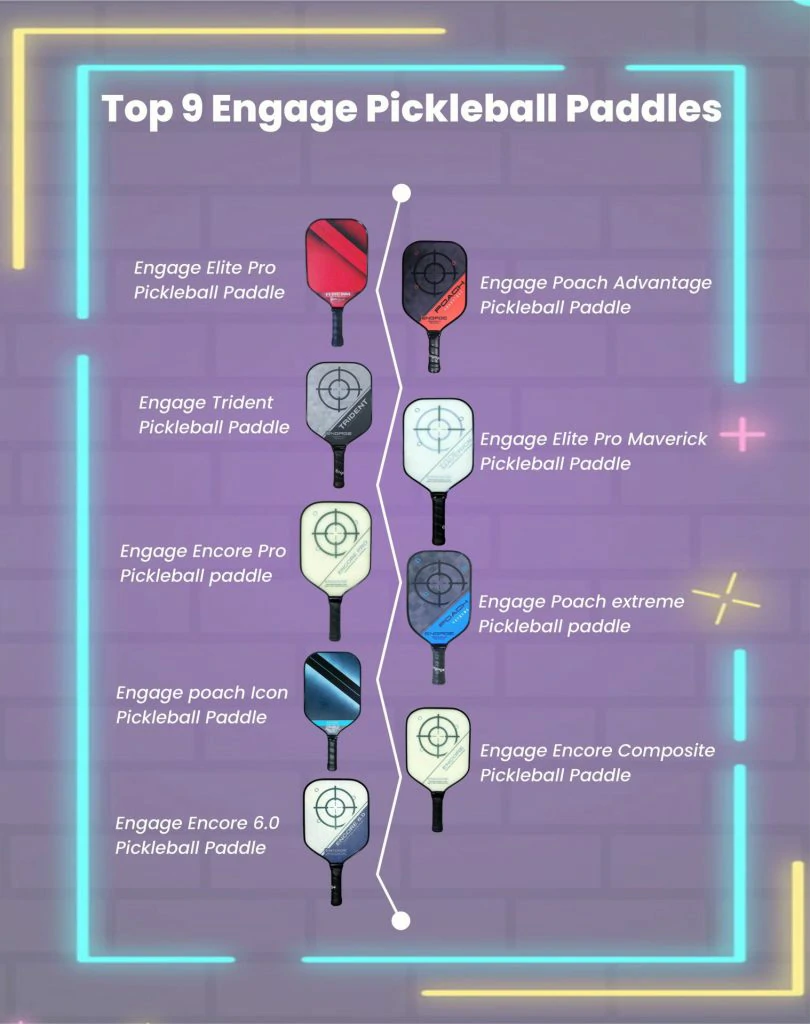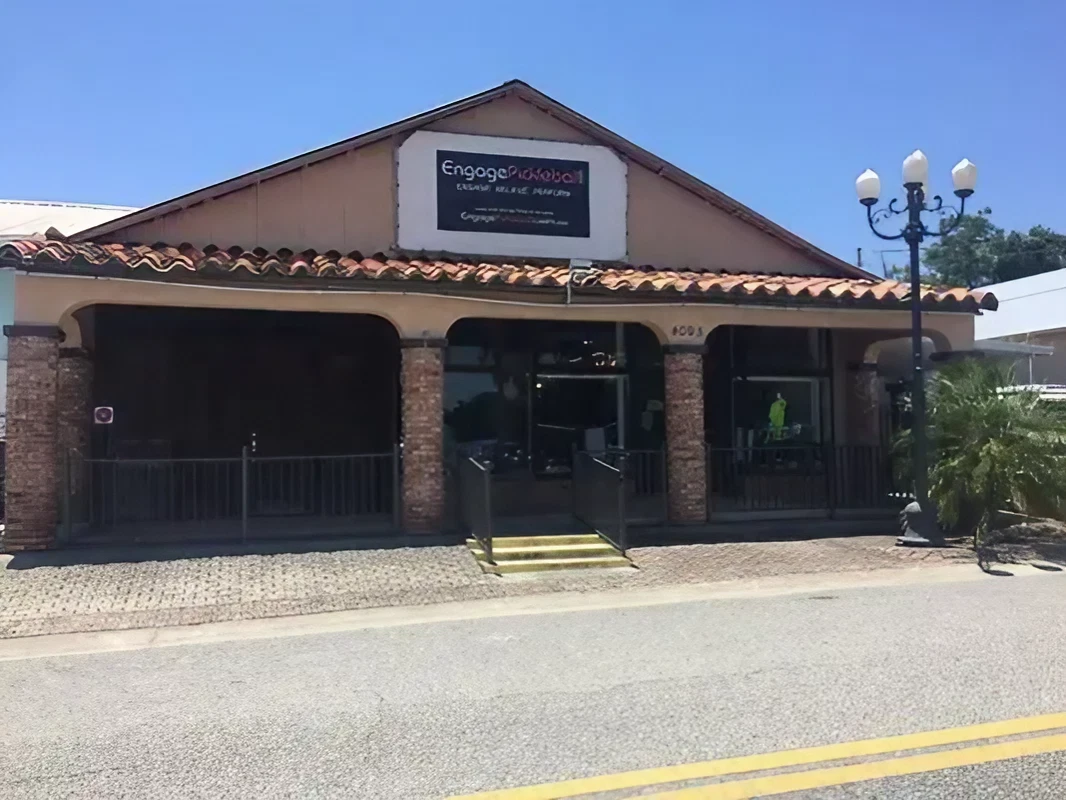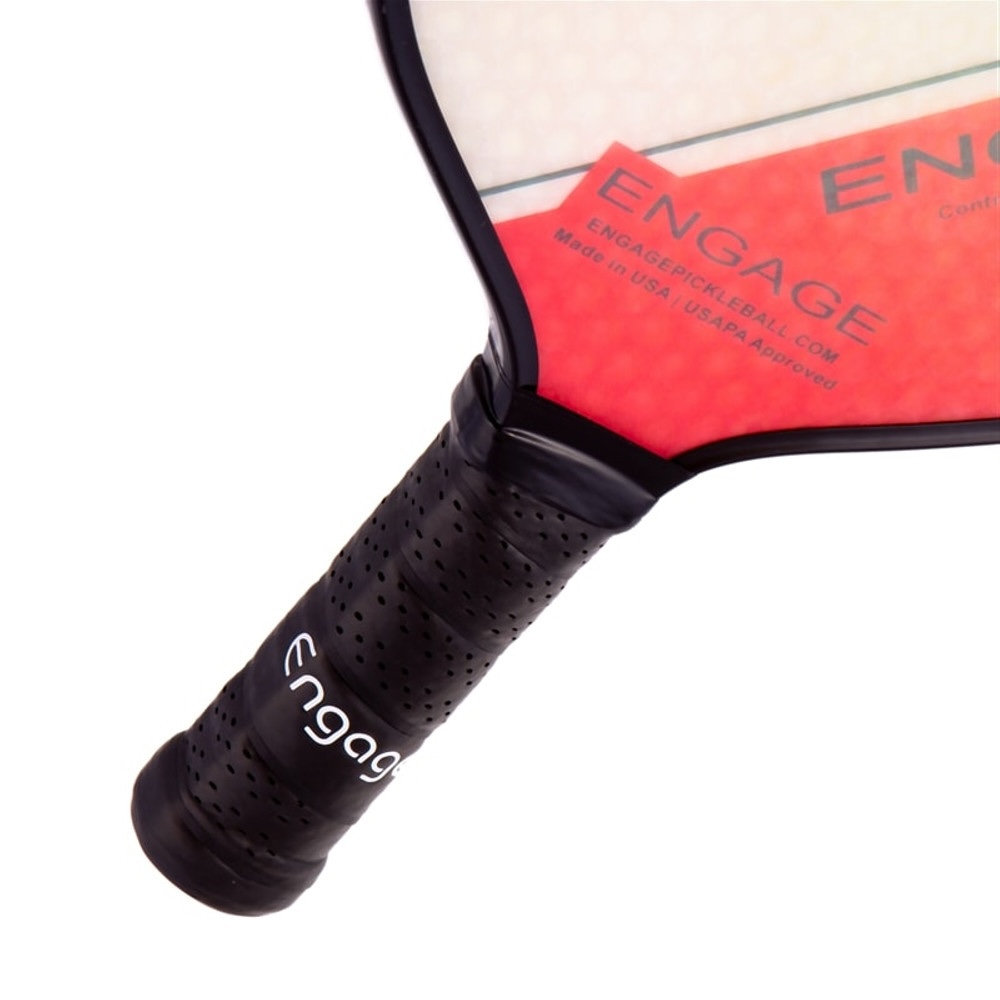
Sie fragen sich, woher Ihr Hochleistungspaddel kommt? Viele Marken verwenden verwirrende Etiketten und verstecken ihre Arbeit in Übersee. Ich zeige Ihnen genau, wo Engage-Paddel hergestellt werden und warum das wichtig ist.
Pickleball-Schläger engagieren1 werden von Anfang bis Ende in ihrer 40.000 Quadratmeter großen Anlage in Oxford, Florida, USA, hergestellt. Das Unternehmen formt, montiert und prüft die Qualität jedes Paddels vor Ort. Kein High-End-Paddel von Engage wird nach Übersee ausgelagert, wodurch die direkte Kontrolle über den gesamten Prozess gewährleistet ist.

Das Wissen um das "Wo" ist nur der Anfang. Das "Warum" ist es, was einer Marke wie Engage ihren Wettbewerbsvorteil verschafft. Als jemand, der jahrelang in Paddelfabriken gearbeitet und ein Paddelgeschäft aufgebaut hat, kann ich Ihnen sagen, dass der Standort der Fabrikhalle alles verändert. Lassen Sie uns einen Blick auf die Anlage in Florida werfen, um zu sehen, wie inländische Produktion2 wirkt sich auf Qualität, Innovation und Ihr Endergebnis als Einzelhändler oder Markeninhaber aus.
Alle Engage-Paddel, einschließlich der Einsteigermodelle, werden in den USA hergestellt.Falsch
Die Website und die Vertreter von Engage behaupten, dass 95% ihres Sortiments in den USA hergestellt wird. Einige preiswertere Produkte oder Zubehörteile werden möglicherweise anders beschafft.
Die US-Fabrik von Engage ermöglicht es, neue Paddel-Prototypen in derselben Woche zu entwickeln und zu testen.Wahr
Interne Daten des Unternehmens zeigen, dass die Produktion vor Ort Prototyp-Iterationen innerhalb einer Woche ermöglicht, ein Prozess, der bei einer Fertigung in Übersee Monate dauern kann.
Was befindet sich im Inneren der Engage-Fabrik in Oxford, Florida?
Sie stellen sich eine gewöhnliche Fabrikhalle vor? Vielleicht fehlen Ihnen die Details, die ein erstklassiges Produkt ausmachen. Lassen Sie uns einen virtuellen Rundgang durch die einzigartige Anlage von Engage machen, um ihre Einrichtung zu sehen.
Die 40.000 Quadratmeter große Fabrik von Engage befindet sich in 4095 County Road 106, Oxford, FL. Es beherbergt den gesamten Produktionsfluss vom Gießen bis zur Montage. Ein wichtiges Merkmal ist der angrenzende Pro Shop und die Sechs-Fußball-Akademie, die die Produktion mit realen Spielertests und Feedback verbindet.

Als ich das erste Mal von der Einrichtung von Engage erfuhr, war der Fabrikbesitzer in mir beeindruckt. Es ist nicht nur ein Ort für die Produktion, sondern eine komplette Ökosystem Pickleball3. Die Anlage ist riesige 40.000 Quadratmeter groß und bietet viel Platz für jeden Schritt des Prozesses. Hier werden das Rohmaterial geformt, die Schichten präzise zusammengesetzt, die Oberflächentechnik aufgetragen und die abschließenden Qualitätskontrollen durchgeführt - alles unter einem Dach.
Das Besondere ist die Integration des Pro Shops und einer Pickleball-Akademie mit sechs Spielfeldern direkt nebenan. Das ist nicht nur ein Nice-to-have-Feature. Es bedeutet, dass die Ingenieure einen neuen Prototyp direkt von der Fabrikhalle auf einen Platz bringen können, um ihn von Profis und Amateurspielern testen zu lassen. So entsteht eine unmittelbare Feedback-Schleife, die unmöglich nachgebildet werden kann, wenn die Fabrik Tausende von Kilometern entfernt ist. Es ist ein intelligentes, vertikal integriertes Modell, das die Menschen, die die Schläger herstellen, mit den Menschen verbindet, die sie benutzen.
Die Fabrik von Engage in Florida wird nur für die Herstellung von Paddeln genutzt.Falsch
Die Anlage umfasst auch einen öffentlich zugänglichen Pro Shop für den Direktverkauf und eine Akademie mit sechs Plätzen für Unterricht, Kurse und Produkttests.
Die gesamte High-End-Paddellinie von Engage wird von Anfang bis Ende in ihrem Werk in Oxford, FL, hergestellt.Wahr
Das Unternehmen bestätigt, dass es seine Premium-Carbonpaddel und Paddel mit Polymerkern vor Ort entwirft, formt, zusammenbaut und auf ihre Qualität hin prüft.
Warum besteht Engage auf einer Produktion in den USA?
Glauben Sie, dass die Herstellung in Übersee immer der beste Weg ist? Versteckte Kosten wie Qualitätsprobleme und lange Vorlaufzeiten können den Ruf Ihrer Marke schädigen. Ich erkläre Ihnen die strategischen Vorteile, die Engage durch die Beibehaltung der Produktion im Inland erzielt.
Engage behält die Produktion in den USA aus drei Hauptgründen bei: Insgesamt Qualitätskontrolle4, garantierte USAPA-Konformität und wesentlich kürzere Forschungs- und Entwicklungszyklen (F&E). Diese Strategie ermöglicht ihnen eine schnellere Innovation und die Beibehaltung eines erstklassigen Produktstandards, der ihre Marktposition rechtfertigt.

Nach meiner Erfahrung in der Branche ist die Kontrolle der eigenen Produktion der ultimative Vorteil. Lassen Sie uns aufschlüsseln, warum Engage's "Hergestellt in den USA5"Engagement ist eine wirksame Geschäftsstrategie.
1. Überlegene Qualitätskontrolle
Wenn Ihr Werk vor Ort ist, haben Sie die Kontrolle über jedes Detail. Engage meldet eine Garantierücklaufquote von weniger als 1%. Vergleichen Sie das mit dem Branchendurchschnitt von 3-5% bei importierten Paddeln. Für einen Einzelhändler ist dieser Unterschied enorm. Weniger Rückgaben bedeuten zufriedenere Kunden, bessere Bewertungen und höhere Gewinnspannen.
2. Garantierte USAPA-Konformität
Das USAPA-Regelwerk entwickelt sich ständig weiter. Mit einer inländischen Fabrik kann Engage seinen Herstellungsprozess sofort anpassen, um konform zu bleiben. Allein im Jahr 2024 wurden über 60 zugelassene Modelle hinzugefügt. Für Unternehmen, die Paddel importieren, kann eine plötzliche Regeländerung bedeuten, dass ein ganzer Versandcontainer mit Produkten nicht mehr für Turniere zugelassen ist. Das ist ein Risiko, das die in den USA ansässigen Hersteller vermeiden.
3. Schnellere Innovation und Lieferung
Hier sind sie der Konkurrenz wirklich voraus. Engage kann einen neuen Prototyp in einer einzigen Woche entwickeln. Eine Idee, die am Montag entwickelt wird, kann bereits am Freitag auf dem Platz getestet werden. Bei der Produktion in Übersee dauert derselbe Zyklus Monate. Diese Schnelligkeit ermöglicht es Engage, technologisch führend auf dem Markt zu sein. Es hilft ihnen auch, auf Nachfragespitzen zu reagieren. Während des Booms im Jahr 2023 hatten einige importierte Marken Rückstände von 11 Wochen. Inländische Betriebe können ihre Produktion viel schneller hochfahren, um die Regale zu füllen.
Importierte Paddel haben die gleiche niedrige Fehlerquote wie in den USA hergestellte Paddel.Falsch
Die internen Daten von Engage zeigen eine Garantierücklaufquote von unter 1%, während der Branchendurchschnitt für importierte Paddel mit 3-5% deutlich höher liegt.
Dank der inländischen Produktion konnten die US-Marken die langen Lieferverzögerungen von 2023 vermeiden.Wahr
Als die Beteiligung amerikanischer Unternehmen zunahm, kam es bei einigen importierten Marken zu Rückständen von bis zu 11 Wochen, ein Problem, das durch kürzere inländische Lieferketten gemildert werden konnte.
Was ist der Unterschied zwischen "Made in USA" und "Designed in USA"?
Sind Sie durch Paddle-Etiketten verwirrt? Irreführende Marketingbegriffe können Sie dazu verleiten, ein importiertes Produkt zu kaufen, das Sie für einheimisch halten. Ich möchte diese gebräuchlichen Ausdrücke erklären, damit Sie klügere Geschäftsentscheidungen treffen können.
"Made in USA" bedeutet, dass das Paddel fast vollständig im Inland hergestellt und montiert wird. Im Gegensatz dazu bedeutet "Designed in USA" oder "Assembled in USA" in der Regel, dass wichtige Komponenten im Ausland, in der Regel in Asien, hergestellt werden, während nur die Designarbeit oder die Endmontage in den USA erfolgt.

Als Geschäftsinhaber, der Produkte beschafft, müssen Sie das Kleingedruckte lesen. Diese Etiketten sind nicht austauschbar, und der Unterschied hat erhebliche Auswirkungen auf Ihre Lieferkette, die Qualität und das Markenimage.
"Hergestellt in den USA"
Dies ist der Goldstandard und wird von der Federal Trade Commission (FTC) gesetzlich geregelt. Es bedeutet, dass das Produkt "ganz oder fast ganz" hier hergestellt wurde. Bei einem Pickleball-Paddel umfasst dies das Formen des Kerns, das Pressen des Obermaterials und die Endmontage. Marken wie Engage, Selkirk und Paddletek bauen ihren Ruf auf diesem Standard auf.
"Entwickelt in den USA"
Dies ist eine sehr gebräuchliche Marketingphrase. Er bedeutet, dass die Technik, die Grafik und die Produktentwicklung in den Vereinigten Staaten stattfinden. Die eigentliche Herstellung - der teure und schwierige Teil - wird jedoch ins Ausland verlagert. Das Paddel wird in einer Fabrik in einem anderen Land hergestellt und dann importiert.
"Zusammengebaut in den USA"
Dieses Etikett ist ein Mittelding. Es bedeutet, dass die einzelnen Komponenten (wie der Kern und die Deckschichten) im Ausland hergestellt und dann zur Endmontage in die USA verschifft wurden. Dadurch werden zwar einige Arbeitsplätze in den USA geschaffen, aber die Kernfertigungstechnologie und die Qualitätskontrolle sind immer noch an eine Fabrik in Übersee gebunden.
Meinen Kunden rate ich immer, potenziellen Lieferanten direkte Fragen zu stellen: "Wo wird der Paddelkern geformt?" und "Wo werden die Komponenten gepresst und montiert?" Die Antworten werden Ihnen die wahre Geschichte hinter dem Etikett verraten.
Designed in USA" ist rechtlich dasselbe wie "Made in USA".Falsch
Die Formulierung "Designed in USA" ist ein Marketingbegriff, der angibt, wo die Forschung und Entwicklung stattgefunden hat, nicht die Herstellung. Made in USA" ist ein gesetzlicher Standard, der von der FTC geregelt wird und eine inländische Produktion vorschreibt.
Die Kennzeichnung "Made in USA" setzt voraus, dass fast alle Teile und Arbeitskräfte eines Produkts aus den USA stammen.Wahr
Der Standard der Federal Trade Commission für eine uneingeschränkte "Made in USA"-Behauptung ist, dass das Produkt "ganz oder fast ganz" in den Vereinigten Staaten hergestellt wurde.
Wie viele Top-Paddelmarken werden noch in den USA hergestellt?
Sie fragen sich, welche großen Marken wirklich "American Made" sind? Der Markt wird von Importen überschwemmt, so dass es schwer ist, die einheimischen Anbieter zu erkennen. Hier finden Sie eine klare Aufschlüsselung der wichtigsten Marken und ihrer Produktionsstandorte.
Nur eine Handvoll großer Paddel-Marken6 produzieren nach wie vor hauptsächlich in den USA. Die "großen Vier" sind Engage (Florida), Selkirk (Idaho), Paddletek (Michigan) und PROLITE (Wisconsin). Diese Marken haben einen geringeren Marktanteil, erzielen aber aufgrund ihrer erstklassigen Qualität und Preisgestaltung höhere Einnahmen.
Die Pickleball-Markt7 hat sich explosionsartig entwickelt, wobei die amerikanische Beteiligung in nur drei Jahren um 300% gestiegen ist. Die meisten neuen Marken, die in diesen Bereich einsteigen, importieren ihre Produkte, um die Kosten niedrig zu halten. Eine Kerngruppe etablierter Hersteller hält jedoch an der heimischen Produktion fest.
Hier eine Momentaufnahme der führenden US-amerikanischen Hersteller im Jahr 2025:
Vergleich von im Inland hergestellten Paddeln (2025)
| Marke | Primärer Standort der Fabrik | % der Linie Made in USA* | Flaggschiff-Modell Preis (USD) |
|---|---|---|---|
| Aktivieren Sie | Oxford, FL | 95 % | Verfolgung Pro1 - $259 |
| Selkirk | Hayden, ID | 100 % | Vanguard Power Air - $250 |
| PROLITE | Milwaukee, WI | 100 % | Stealth GS2 - $180 |
| Paddletek | Niles, MI | 100 % | Bantam TKO-C - $199 |
*Angaben der Marken-Websites oder der Vertreter des Herstellers.
Was sagt uns diese Tabelle? Diese vier Marken sind das Herzstück der amerikanischen Pickleball-Herstellung. Die Marktanalyse zeigt, dass auf diese einheimischen Hersteller zwar etwa 20% der insgesamt verkauften Schläger entfallen, sie aber rund 38% des Branchenumsatzes erwirtschaften. Dies ist darauf zurückzuführen, dass sie erfolgreich Premium-Preise verlangen.
Aus meiner Sicht wird hier eine Schlüsselstrategie deutlich. Für Einzelhändler und Distributoren zieht die Bevorratung dieser in den USA hergestellten Paddel einen bestimmten Kunden an: einen Kunden, der Wert auf Spitzentechnologie, Langlebigkeit und die Unterstützung heimischer Produktion legt. Sie sind bereit, für ein Produkt, dem sie vertrauen, mehr zu bezahlen. Beim Angebot dieser Marken geht es nicht nur darum, ein Paddel zu verkaufen, sondern auch darum, ein höheres Qualitätsniveau und eine überzeugende Markengeschichte zu bieten.
Die meisten der meistverkauften Pickleball-Schläger werden in den USA hergestellt.Falsch
Der Großteil der verkauften Paddel wird importiert. Auf die in den USA ansässigen Hersteller entfallen nur etwa 20% des gesamten Marktanteils nach Volumen.
Die in den USA hergestellten Pickleball-Schläger haben einen unverhältnismäßig hohen Anteil am Umsatz der Branche.Wahr
Trotz eines Marktanteils von ca. 20% entfallen laut Marktanalyse 38% des Gesamtumsatzes der Branche auf die in den USA hergestellten Marken, was auf ihre hohen Preise zurückzuführen ist.
Schlussfolgerung
Engage-Schläger werden in Oxford, Florida, hergestellt. Diese in den USA ansässige Fertigung sorgt für überlegene Qualität, schnellere Innovation und eine zuverlässige Lieferkette und setzt damit einen hohen Standard für die gesamte Pickleball-Industrie.
Referenzen
-
Entdecken Sie die Vorteile der Engage-Schläger, einschließlich Qualität und Leistung, um Ihr Spiel zu verbessern. ↩
-
Entdecken Sie, wie die inländische Produktion die Qualität verbessern, die Lieferzeiten verkürzen und den Ruf der Marke verbessern kann. ↩
-
Das Verständnis des Pickleball-Ökosystems kann Aufschluss darüber geben, wie Produkte entwickelt und getestet werden. ↩
-
Erfahren Sie, wie wirksame Maßnahmen zur Qualitätskontrolle zu einer höheren Produktzuverlässigkeit und Kundenzufriedenheit führen können. ↩
-
Wenn Sie das Label "Made in USA" verstehen, können Sie sich für qualitativ hochwertige Produkte entscheiden, die in den USA hergestellt werden. ↩
-
Erfahren Sie, welche Marken der heimischen Produktion den Vorzug geben und was das für Qualität und Leistung bedeutet. ↩
-
Bleiben Sie auf dem Laufenden über die neuesten Trends auf dem wachsenden Pickleball-Markt und treffen Sie fundierte Geschäftsentscheidungen. ↩





